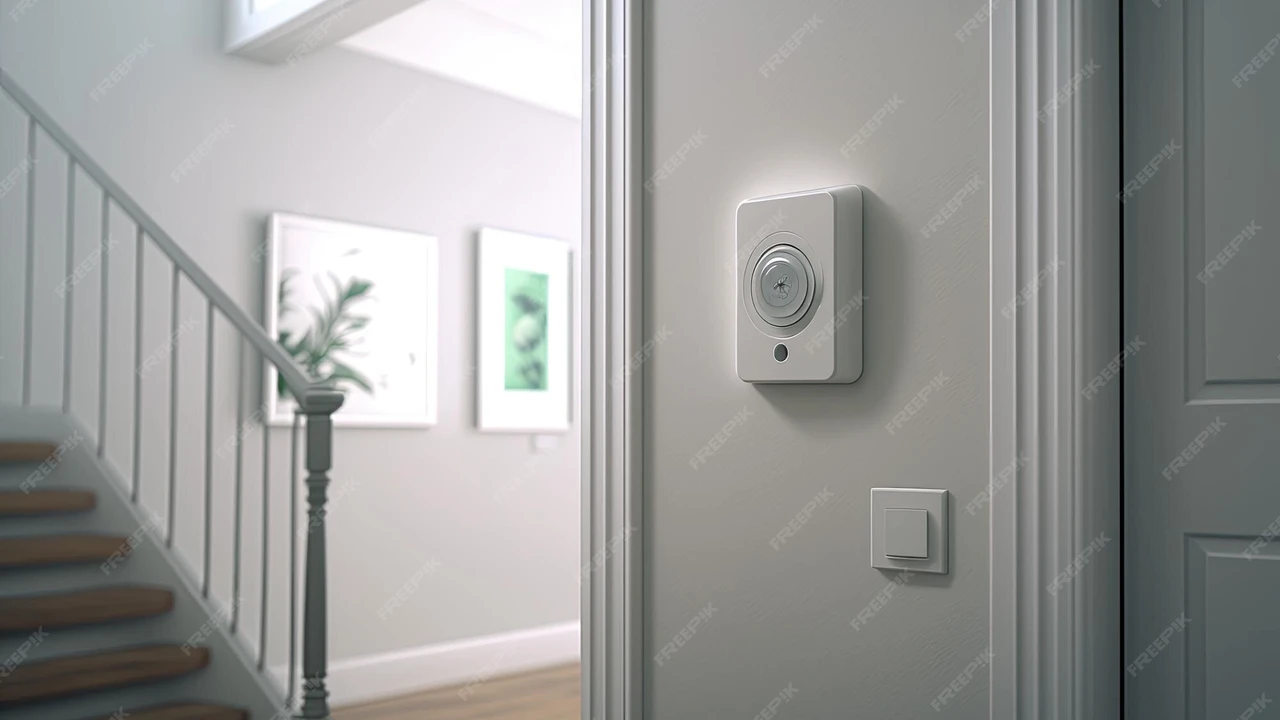Best DIY Home Alarm Systems for Easy Installation
Find the top DIY home alarm systems that offer easy installation and effective security without professional help.

Best DIY Home Alarm Systems for Easy Installation
Hey there! Looking to beef up your home security without breaking the bank or getting tangled in complicated installations? You’re in the right place! DIY home alarm systems have come a long way, offering robust protection that’s super easy to set up yourself. No need for professional installers, no hefty monthly fees (unless you want them!), and you get full control over your home’s safety. We’re going to dive deep into the best DIY home alarm systems out there, focusing on ease of installation, effectiveness, and value for money. We’ll compare some top contenders, talk about their features, ideal use cases, and even give you a ballpark on pricing. Let’s get your home secured!
Why Choose a DIY Home Alarm System for Your Home Security Needs?
So, why go DIY when there are plenty of professional installation services around? Well, there are a few compelling reasons. First off, cost. Professional installation can add hundreds, sometimes thousands, to your initial setup. With DIY, you save that money right off the bat. Secondly, flexibility. You can customize your system exactly how you want it, adding sensors where you need them and expanding as your needs change. No waiting for a technician, no scheduling appointments. Thirdly, control. You’re in charge. You manage your system, monitor alerts, and decide who gets access. It’s empowering! Plus, many DIY systems offer professional monitoring as an optional add-on, giving you the best of both worlds.
Key Features to Look for in Easy Installation DIY Home Alarm Systems
When you’re shopping for a DIY home alarm system, what should you keep an eye out for? Here’s a checklist of essential features that make a system truly easy to install and effective:
- Wireless Components: This is a big one for DIY. Wireless sensors and cameras mean no drilling through walls or running unsightly cables. Just peel, stick, and connect.
- User-Friendly App: A good mobile app is crucial. It should guide you through installation, allow you to arm/disarm your system, view live feeds, and manage settings from anywhere.
- Clear Instructions: Look for systems with detailed, easy-to-understand manuals or, even better, video tutorials.
- Expandability: Can you easily add more sensors, cameras, or smart home devices later on? You want a system that can grow with your needs.
- Battery Backup: Power outages happen. A system with battery backup ensures your security remains active even when the lights go out.
- Cellular Backup: If your internet goes down, cellular backup keeps your system connected to monitoring services (if you opt for them).
- Smart Home Integration: Do you want your alarm system to talk to your smart lights, thermostats, or voice assistants? Check for compatibility.
- Pet Immunity: If you have furry friends, pet-immune motion sensors are a must to avoid false alarms.
- Professional Monitoring Option: Even if you plan to self-monitor, having the option for professional monitoring down the line can be a huge plus.
Top DIY Home Alarm Systems for Easy Installation and Effective Security
Alright, let’s get to the good stuff! Here are some of the best DIY home alarm systems that truly shine in terms of ease of installation, features, and overall value. We’ll compare SimpliSafe, Ring Alarm, and Abode, giving you a clear picture of what each offers.
SimpliSafe Home Security System A Popular Choice for DIY Enthusiasts
SimpliSafe has been a household name in DIY security for a while, and for good reason. They’ve built their reputation on simplicity, reliability, and affordability. It’s incredibly easy to set up, making it a fantastic choice for anyone new to home security.
Key Features and Benefits of SimpliSafe
- Wireless Setup: All components are wireless, meaning no drilling or complicated wiring. You literally just place them where you want them.
- Modular Design: You can start with a basic kit and add sensors, cameras, and other devices as needed.
- Professional Monitoring (Optional): SimpliSafe offers 24/7 professional monitoring plans starting at a very reasonable price, with no long-term contracts. This includes cellular backup.
- Wide Range of Sensors: They offer entry sensors, motion sensors, glass break sensors, smoke detectors, CO detectors, water sensors, and even temperature sensors.
- User-Friendly App: The SimpliSafe app is intuitive, allowing you to arm/disarm, check status, and view camera feeds easily.
- Battery Backup: The base station has a 24-hour battery backup.
- Smart Home Integration: Works with Amazon Alexa and Google Assistant.
Ideal Use Cases for SimpliSafe
SimpliSafe is perfect for:
- Renters: No permanent installation required, so it’s easy to take with you when you move.
- First-time home security buyers: The ease of use makes it less intimidating.
- Budget-conscious homeowners: Affordable equipment and monitoring plans.
- Anyone who values simplicity: If you want a system that just works without fuss, SimpliSafe is a strong contender.
SimpliSafe Product Recommendations and Pricing
- The Foundation Kit: This is a great starting point, usually includes a base station, keypad, one entry sensor, and one motion sensor. Price: Around $200-$250.
- The Essentials Kit: Adds more sensors for broader coverage. Price: Around $250-$300.
- The Hearth Kit: Includes environmental sensors like smoke and CO detectors. Price: Around $350-$400.
- SimpliCam: Indoor camera for live viewing and recording. Price: Around $99.
- Outdoor Camera: Weather-resistant camera for exterior monitoring. Price: Around $189.
Monitoring Plans:
- Standard Plan: Around $17.99/month for 24/7 professional monitoring.
- Interactive Plan: Around $27.99/month for 24/7 professional monitoring, cellular backup, app control, secret alerts, and camera recording. This is highly recommended for full functionality.
Ring Alarm Home Security System Seamless Integration with Amazon Ecosystem
If you’re already in the Amazon ecosystem with Alexa devices, Ring Alarm is a natural fit. Known for its video doorbells and cameras, Ring also offers a very capable DIY alarm system that integrates beautifully with their other products.
Key Features and Benefits of Ring Alarm
- Easy DIY Installation: Similar to SimpliSafe, Ring Alarm components are wireless and designed for quick setup.
- Strong Ecosystem Integration: Works seamlessly with Ring doorbells, cameras, and Amazon Alexa. You can arm/disarm with voice commands.
- Affordable Professional Monitoring: The Ring Protect Plus plan is one of the most competitive in the market, offering 24/7 professional monitoring and video recording for all Ring devices.
- Variety of Sensors: Offers contact sensors, motion detectors, flood & freeze sensors, and smoke & CO listeners.
- Z-Wave Compatibility: The base station acts as a Z-Wave hub, allowing you to connect other Z-Wave smart home devices.
- Battery and Cellular Backup: Ensures continuous operation during power or internet outages.
Ideal Use Cases for Ring Alarm
Ring Alarm is an excellent choice for:
- Existing Ring users: If you already have Ring doorbells or cameras, this is a no-brainer for unified security.
- Amazon Alexa users: Deep integration with Alexa for voice control and smart home routines.
- Those seeking affordable monitoring: The Ring Protect Plus plan offers incredible value.
- Homeowners who want a comprehensive security ecosystem: Combining alarm, cameras, and doorbells under one app.
Ring Alarm Product Recommendations and Pricing
- Ring Alarm 5-Piece Kit: Includes a base station, keypad, contact sensor, motion detector, and range extender. Price: Around $199.99.
- Ring Alarm 8-Piece Kit: More sensors for larger homes. Price: Around $249.99.
- Ring Alarm 14-Piece Kit: Comprehensive coverage for very large homes. Price: Around $329.99.
- Ring Indoor Cam: Compact indoor camera. Price: Around $59.99.
- Ring Stick Up Cam Battery/Plug-In: Versatile indoor/outdoor camera. Price: Around $99.99.
Monitoring Plans:
- Ring Protect Basic: Around $3.99/month per device for video recording.
- Ring Protect Plus: Around $10/month or $100/year for 24/7 professional monitoring, cellular backup, and video recording for ALL your Ring devices. This is the best value.
Abode Home Security System Smart Home Powerhouse with DIY Flexibility
Abode stands out for its robust smart home capabilities and flexibility. It’s a bit more advanced than SimpliSafe or Ring in terms of smart home integration, making it ideal for tech-savvy users who want their security system to be the brain of their smart home.
Key Features and Benefits of Abode
- Advanced Smart Home Integration: Supports Z-Wave, Zigbee, and HomeKit (with certain gateways), allowing connection to a vast array of smart devices.
- Flexible Monitoring Options: Offers self-monitoring, on-demand professional monitoring (pay-per-use), and traditional 24/7 professional monitoring plans.
- High-Quality Components: Abode’s sensors and cameras are well-built and reliable.
- Customizable Automation: Create complex automation rules (CUE automations) to link security events with smart home actions.
- Battery and Cellular Backup: Standard for reliable operation.
- Choice of Gateways: Abode offers different gateway options (Gateway, Iota) with varying features, including built-in cameras.
Ideal Use Cases for Abode
Abode is best suited for:
- Smart home enthusiasts: If you want your security system to be the central hub for all your smart devices.
- Users who want ultimate flexibility: The various monitoring options cater to different preferences.
- Tech-savvy individuals: While still DIY-friendly, it offers more advanced customization options.
- Homeowners looking for a future-proof system: Its broad compatibility ensures it will work with new smart devices.
Abode Product Recommendations and Pricing
- Abode Iota All-in-One Security Kit: Includes the Iota gateway (with built-in HD camera and siren), mini door/window sensor, and keyfob. Price: Around $229-$279.
- Abode Smart Security Kit: Includes the standard Gateway, mini door/window sensor, motion sensor, and keyfob. Price: Around $199-$249.
- Abode Cam 2: Indoor/outdoor camera. Price: Around $35.
- Additional Sensors: Door/window sensors (around $25), motion sensors (around $35), glass break sensors (around $45).
Monitoring Plans:
- Standard Plan: Free self-monitoring with limited features.
- Standard Plan (with cellular backup): Around $6/month for cellular backup and 3 days of timeline history.
- Pro Plan: Around $20/month or $200/year for 24/7 professional monitoring, cellular backup, 90 days of timeline history, and full smart home automation.
- On-Demand Monitoring: Pay for 3 or 7 days of professional monitoring as needed (e.g., when you’re on vacation).
Comparing the Top DIY Home Alarm Systems SimpliSafe vs Ring Alarm vs Abode
Let’s put these three head-to-head to help you make an informed decision.
Ease of Installation and Setup Process
- SimpliSafe: Arguably the easiest. The app guides you step-by-step, and components are clearly labeled. It’s almost foolproof.
- Ring Alarm: Very straightforward. The Ring app is excellent and walks you through adding each device. If you’re familiar with Ring products, it’s a breeze.
- Abode: Still very easy, but with slightly more options and integrations, it might take a tiny bit longer if you’re diving into smart home automations. The core security setup is quick.
Monitoring Options and Costs for DIY Home Security
- SimpliSafe: Offers self-monitoring (limited) and two professional monitoring plans ($17.99/month and $27.99/month). No contracts.
- Ring Alarm: Offers self-monitoring (limited) and the highly affordable Ring Protect Plus plan ($10/month or $100/year) for professional monitoring and video recording across all Ring devices.
- Abode: Most flexible. Free self-monitoring, a basic plan with cellular backup ($6/month), a full professional monitoring plan ($20/month or $200/year), and unique on-demand monitoring.
Smart Home Integration and Ecosystem Compatibility
- SimpliSafe: Integrates with Amazon Alexa and Google Assistant. Limited direct smart home device compatibility beyond that.
- Ring Alarm: Excellent integration with Amazon Alexa and other Ring devices (doorbells, cameras). Z-Wave compatibility allows for some third-party smart home devices.
- Abode: The clear winner here. Supports Z-Wave, Zigbee, and HomeKit (with Iota gateway), making it a true smart home hub. Highly customizable automations.
Equipment Costs and Value for Money
- SimpliSafe: Mid-range equipment costs. Good value, especially with their frequent sales.
- Ring Alarm: Generally the most affordable equipment, especially when considering the value of the Protect Plus monitoring plan.
- Abode: Equipment costs are competitive, especially considering the advanced smart home features. The Abode Cam 2 is particularly budget-friendly.
Tips for Maximizing Your DIY Home Alarm System’s Effectiveness
Getting your system set up is just the first step. Here are some tips to make sure your DIY alarm system is doing its best job at protecting your home:
- Strategic Sensor Placement: Don’t just stick sensors anywhere. Place entry sensors on all ground-floor doors and windows, and any easily accessible upper-floor windows. Motion sensors should cover main traffic areas but avoid pointing at windows or heat sources that could cause false alarms.
- Test Regularly: Make it a habit to test your system, especially after adding new components or if there’s a power outage. Most systems have a test mode.
- Secure Your Wi-Fi: Your alarm system relies on your home network. Use a strong, unique password for your Wi-Fi and enable WPA2/WPA3 encryption.
- Consider Outdoor Cameras: While the alarm system protects the interior, outdoor cameras (like Ring’s or Abode’s) can deter intruders before they even get to your door and provide valuable evidence.
- Use Yard Signs and Window Decals: These are simple but effective deterrents. Most alarm companies provide them.
- Educate Your Family: Make sure everyone in your household knows how to arm/disarm the system, what to do in case of an alarm, and how to use any panic features.
- Enable Two-Factor Authentication: For your alarm system’s app and online account, always enable 2FA for an extra layer of security.
- Review Alerts and Notifications: Pay attention to the alerts your system sends. Understand what they mean and adjust settings if you’re getting too many false alarms.
Common Questions About DIY Home Alarm Systems Answered
Do DIY home alarm systems really work as well as professionally installed ones?
Absolutely! Modern DIY systems are incredibly effective. The key difference is who installs and maintains them. If you follow the instructions and place sensors correctly, a DIY system can provide just as much protection as a professionally installed one, often with more flexibility and lower costs.
Can I install a DIY alarm system if I’m not tech-savvy?
Yes! Systems like SimpliSafe and Ring Alarm are specifically designed for ease of use and installation, even for beginners. Their apps guide you through every step, and components are typically peel-and-stick. If you can set up a smart speaker, you can set up these systems.
What happens if my internet goes out with a DIY alarm system?
Most reputable DIY alarm systems, especially those with professional monitoring options, include cellular backup. This means if your Wi-Fi goes down, the system can still communicate with the monitoring center (or send you alerts) using a cellular connection. The base station also usually has a battery backup to handle power outages.
Are there any monthly fees with DIY home alarm systems?
It depends on the system and your preferences. Many DIY systems offer a basic self-monitoring option with no monthly fees, but this usually means you’re responsible for calling emergency services yourself. For features like 24/7 professional monitoring, cellular backup, and cloud video storage, there are typically monthly subscription fees. These are usually much lower than traditional professionally installed systems.
Can I integrate my DIY alarm system with other smart home devices?
Yes, many DIY systems offer smart home integration. Ring Alarm works great with the Amazon Alexa ecosystem, while Abode is a powerhouse for integrating with Z-Wave, Zigbee, and HomeKit devices. SimpliSafe also offers Alexa and Google Assistant integration. Check the specific system’s compatibility before you buy if smart home integration is a priority for you.
Choosing the right DIY home alarm system means finding the perfect balance between ease of installation, features, and cost. Whether you prioritize simplicity, deep smart home integration, or budget-friendly monitoring, there’s a fantastic DIY option out there for you. Get ready to enjoy peace of mind knowing your home is secure, all thanks to your own efforts!
:max_bytes(150000):strip_icc()/277019-baked-pork-chops-with-cream-of-mushroom-soup-DDMFS-beauty-4x3-BG-7505-5762b731cf30447d9cbbbbbf387beafa.jpg)






